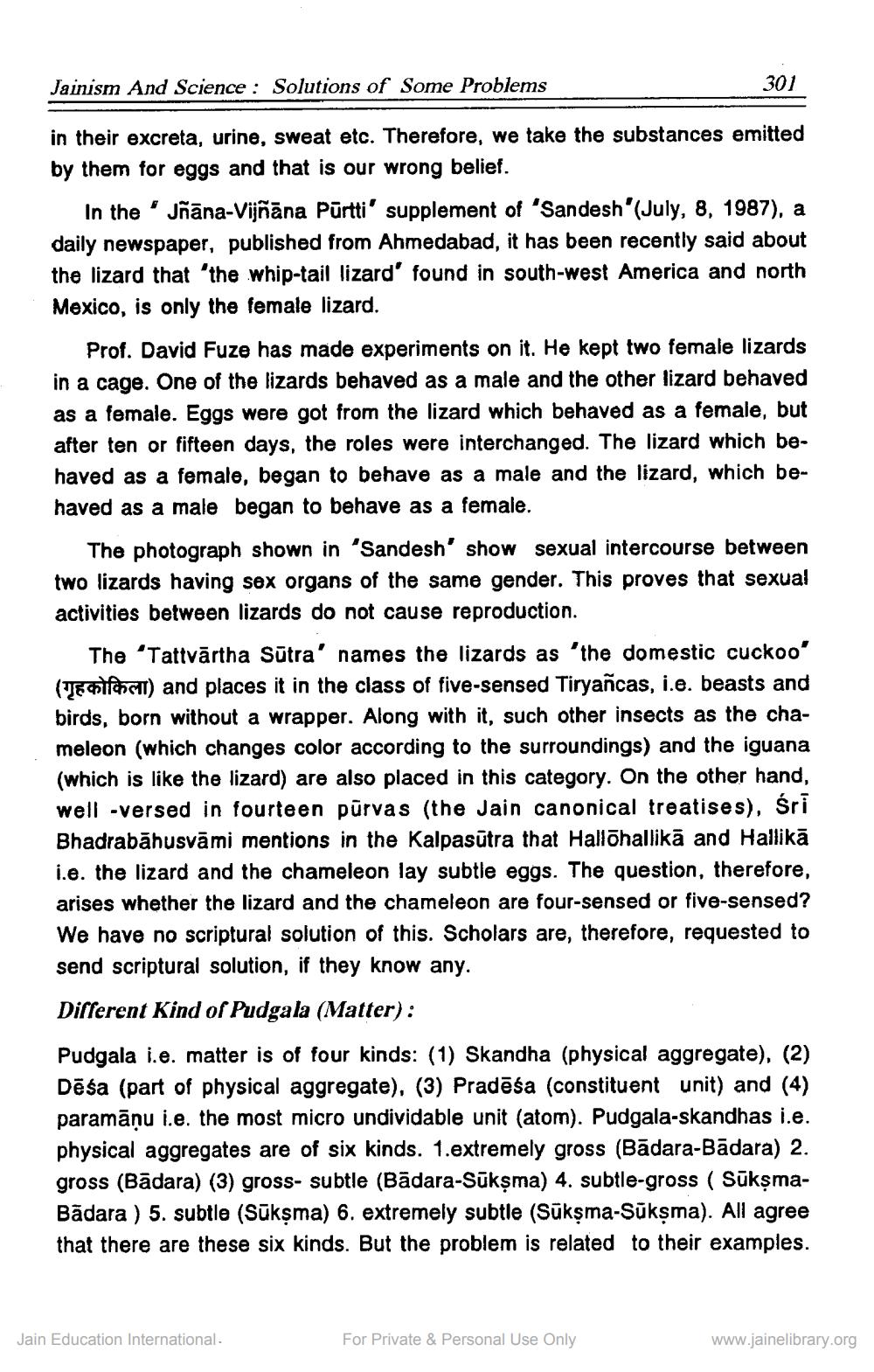________________
Jainism And Science : Solutions of Some Problems
301
in their excreta, urine, sweat etc. Therefore, we take the substances emitted by them for eggs and that is our wrong belief.
In the jñāna-Vijñāna Pūrtti' supplement of 'Sandesh' (July, 8, 1987), a daily newspaper, published from Ahmedabad, it has been recently said about the lizard that 'the whip-tail lizard' found in south-west America and north Mexico, is only the female lizard.
Prof. David Fuze has made experiments on it. He kept two female lizards in a cage. One of the lizards behaved as a male and the other lizard behaved as a female. Eaas were got from the lizard which behaved as a female, but after ten or fifteen days, the roles were interchanged. The lizard which behaved as a female, began to behave as a male and the lizard, which behaved as a male began to behave as a female.
The photograph shown in 'Sandesh' show sexual intercourse between two lizards having sex organs of the same gender. This proves that sexual activities between lizards do not cause reproduction.
The 'Tattvārtha Sūtra' names the lizards as 'the domestic cuckoo' (Jensitand places it in the class of five-sensed Tiryancas, i.e. beas birds. born without a wrapper. Along with it, such other insects as the chameleon (which changes color according to the surroundings) and the iguana (which is like the lizard) are also placed in this category. On the other hand, well -versed in fourteen pūrvas (the Jain canonical treatises), śri Bhadrabāhusvāmi mentions in the Kalpasūtra that Hallohallikā and Hallikā i.e. the lizard and the chameleon lay subtle eggs. The question, therefore, arises whether the lizard and the chameleon are four-sensed or five-sensed? We have no scriptural solution of this. Scholars are, therefore, requested to send scriptural solution, if they know any. Different kind of Pudgala (Matter): Pudgala i.e. matter is of four kinds: (1) Skandha (physical aggregate), (2) Dēša (part of physical aggregate), (3) Pradēša (constituent unit) and (4) paramāņu i.e. the most micro undividable unit (atom). Pudgala-skandhas i.e. physical aggregates are of six kinds. 1.extremely gross (Bādara-Bādara) 2. gross (Bādara) (3) gross- subtle (Bādara-Sūkşma) 4. subtle-gross ( SūkşmaBādara ) 5. subtle (Sūkşma) 6. extremely subtle (Sūkşma-Sūkşma). All agree that there are these six kinds. But the problem is related to their examples.
Jain Education International
For Private & Personal Use Only
www.jainelibrary.org




